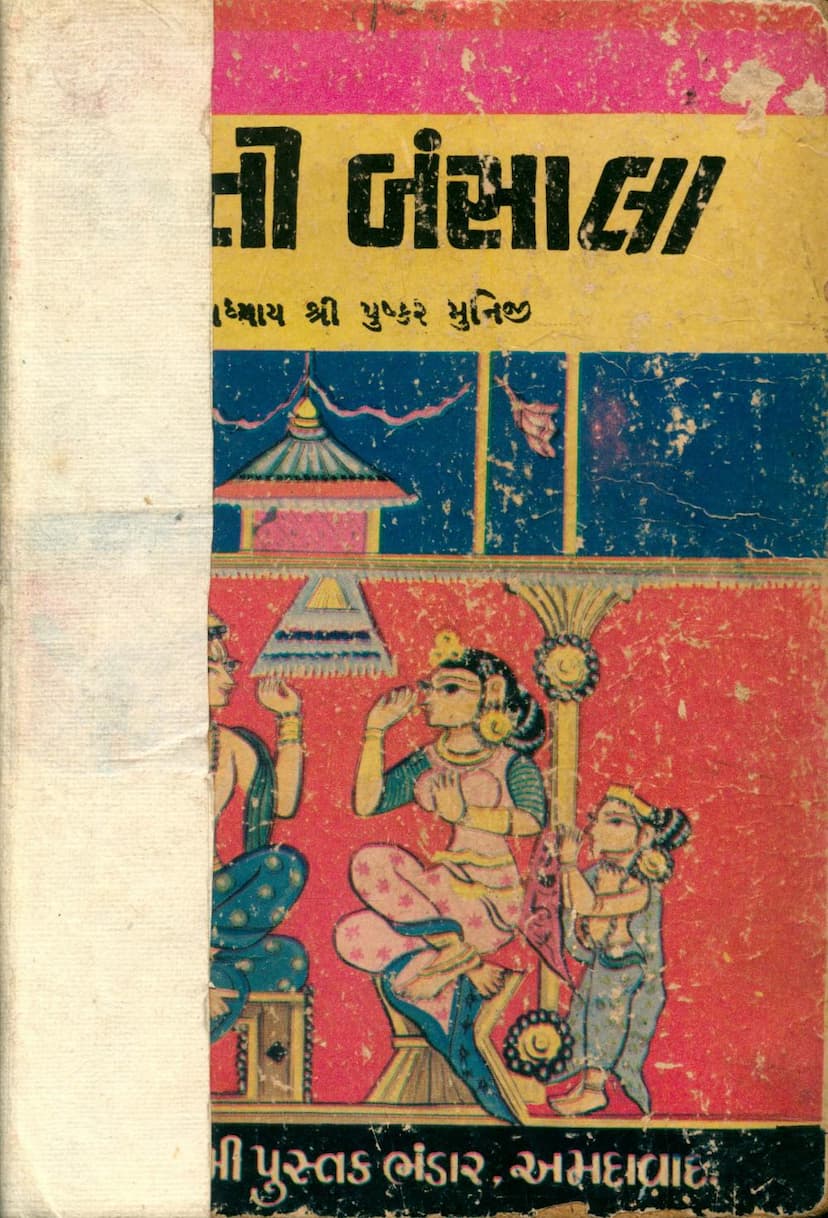Sati Bansala
Added to library: September 2, 2025

Summary
Certainly, here's a comprehensive summary of the Jain text "Sati Bansala" based on the provided pages:
Book Title: Sati Bansala Author(s): Pushkar Muni, Devendra Muni Publisher: Lakshmi Pustak Bhandar
Overall Summary:
"Sati Bansala" is a Jain narrative, compiled and presented by esteemed Jain monks, focusing on stories that impart moral, ethical, and spiritual values. The book highlights the importance of virtue, righteousness, devotion, and the consequences of actions, often through the lives of exemplary characters. The overarching theme is the cultivation of inner strength and adherence to Jain principles, even in the face of adversity.
Key Themes and Content:
- The Power of Stories: The introductory sections (pages 6-8) emphasize that stories are a vital part of literature, accessible and relatable to all ages and strata of society. They are considered an effective tool for instilling values and character development. Jain literature, rich in stories across various languages and eras, is highlighted as a significant repository of such narratives.
- The Purpose of Jain Stories: Jain stories, as explained in the editorial (pages 7-9), go beyond mere entertainment. They aim to inspire, impart knowledge about ethical conduct (achar dharma), philosophy (darshan), the cycle of birth and death (punarjanma), and the principles of karma. The ultimate goal is to guide individuals towards spiritual growth and liberation.
- The Character of Sati Bansala (implied): While the title is "Sati Bansala," the provided pages don't extensively detail her story in the initial sections. However, the narrative begins with the story of Prince Mukansingh and Princess Bansala. Bansala is portrayed as an exceptionally intelligent, virtuous, and devoted princess. Her marriage at a young age to a prince with a prophesied short lifespan sets the stage for her unwavering commitment and trials.
- Mukansingh's Story - A Life of Trials and Divine Intervention: The core of the provided narrative revolves around Prince Mukansingh of Prithvipur. Born after a long wait and numerous rituals, his life is immediately marked by a dire prophecy of an early death.
- The Prophecy and the Marriage: Mukansingh is predicted to die within six months of his birth. To avert this, upon the advice of an astrologer, his parents arrange his marriage to Princess Bansala of Kanakavati, who is twelve years old. The marriage is to be conducted symbolically with Mukansingh's sword and turban before his birth chart aligns with Bansala's for marriage.
- Bansala's Devotion and Resilience: Bansala, despite her young age, displays remarkable maturity and devotion. After the symbolic marriage, she embarks on a journey with the infant Mukansingh (who is merely two months old and destined to die in four months) to fulfill her marital duties and protect him. She faces numerous hardships, including separation from her family, the challenges of raising Mukansingh in the wilderness, and the intervention of celestial beings (Devi) who help her provide for the infant.
- Mukansingh's Transformations: Mukansingh's life is a series of extraordinary events. He is rescued from death multiple times, taken in by different families (a king, a cowherd named Nand), and renamed multiple times (Ranajitsingh, Gangasingh). Throughout these transformations, Bansala remains a constant, devoted companion and protector, often in disguise.
- The Grand Revelation and Union: The story culminates with Mukansingh, now a capable and renowned king (having achieved various kingdoms through his destiny and the interventions of various powers), returning to his origins. The truth of his identity and his marriage to Bansala is finally revealed. Bansala, who had remained steadfast in her devotion and purity, is reunited with Mukansingh.
- Thematic Elements:
- Destiny vs. Free Will: The narrative explores the interplay of predetermined fate (bhagya) and individual effort (udyam). Despite prophecies, characters often face choices that shape their destiny.
- Devotion (Pativrata Dharma): Bansala's unwavering loyalty and dedication to Mukansingh, even when he was an infant and later absent, exemplify the ideal of a devoted wife.
- Karma and Consequences: The challenges faced by Mukansingh and Bansala are often presented as the fruition of past karmas, while their virtuous actions lead to eventual happiness.
- Divine Intervention and Grace: The presence of deities and celestial beings aiding the protagonists suggests the role of divine grace in overcoming obstacles.
- Patience and Perseverance: Bansala's long and arduous journey, her unwavering resolve, and her ability to endure suffering are central to her character.
- Inclusion of Other Stories: The book seems to be a collection of narratives, as indicated by other titles listed on page 3, such as "Sati Padmini," "Mahasathi Madanrekha," "Veer Ambad," and others. The provided text primarily focuses on the narrative starting with "Sati Bansala-1" and following Mukansingh's life.
In essence, "Sati Bansala" is likely a collection of inspiring Jain tales, with the featured story of Bansala and Mukansingh demonstrating the triumph of virtue, devotion, and perseverance against the backdrop of destiny and divine will.